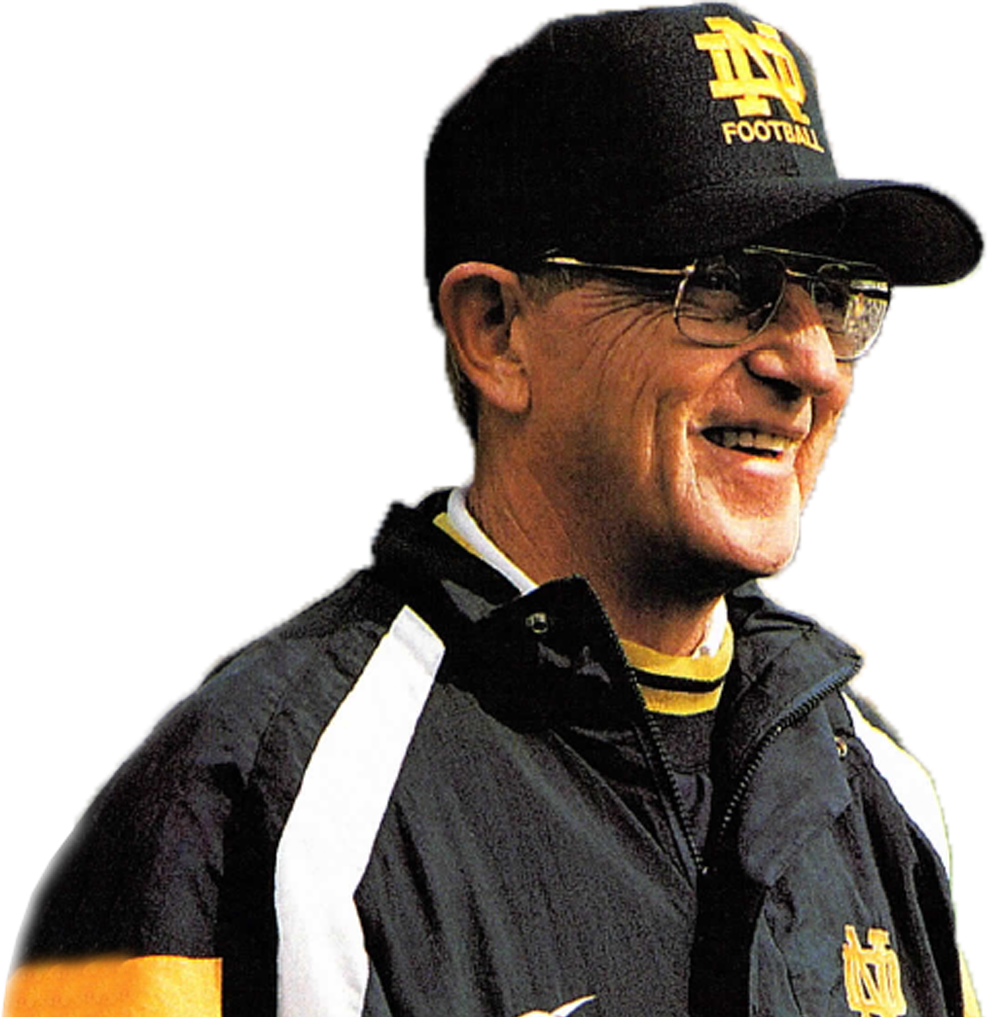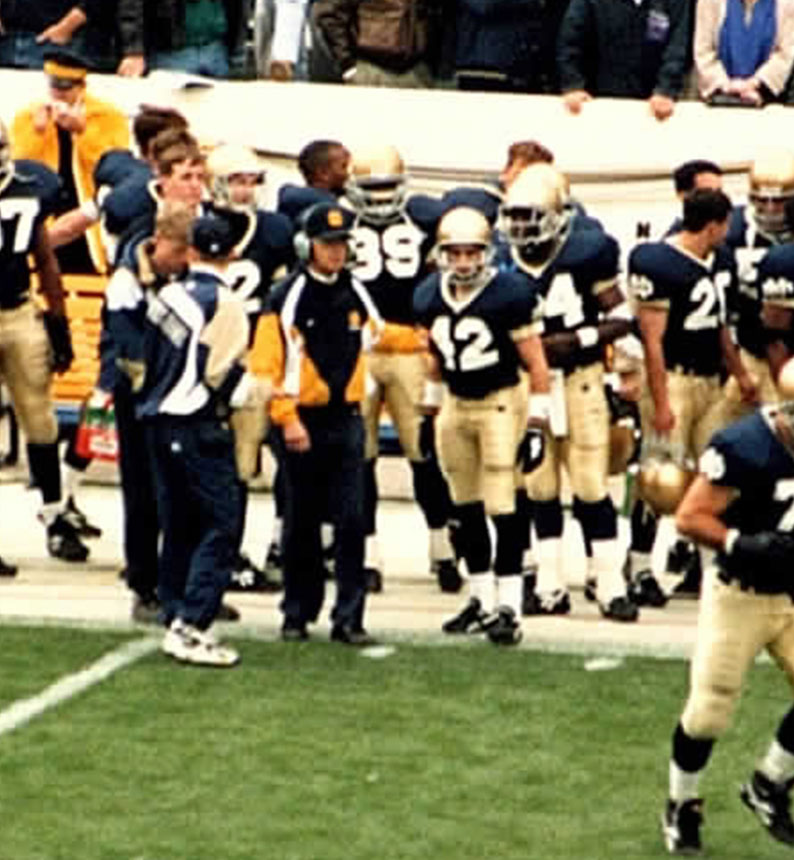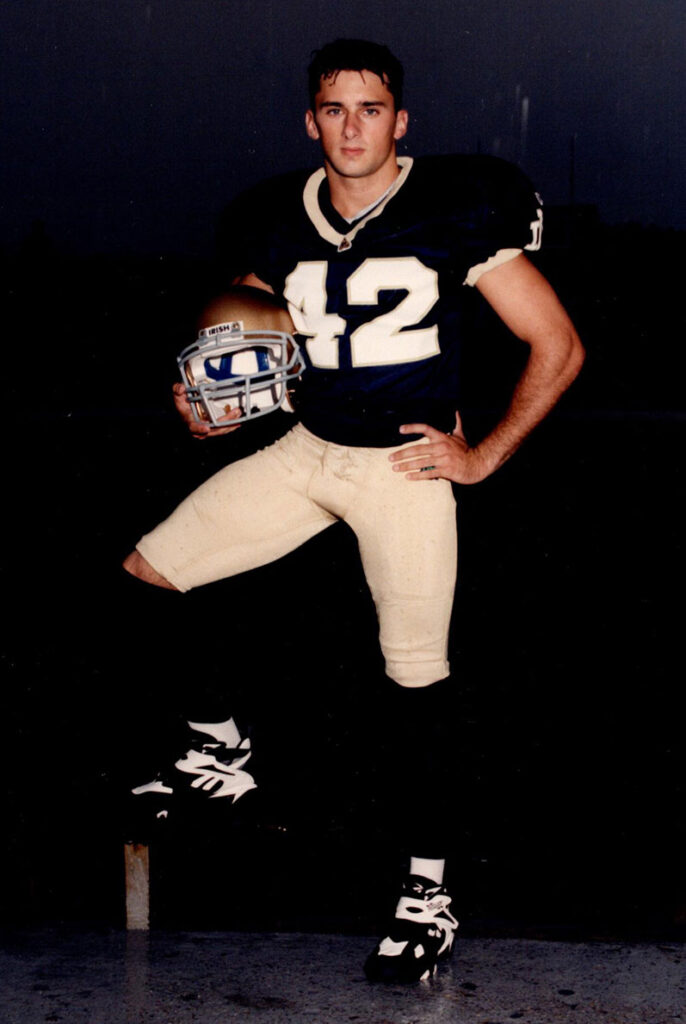
A Foreword from Coach Lou Holtz!


I first met Mike Frascogna in August of 1992 while I was serving as the head football coach at the University of Notre Dame. By every measure, Mike was a statistical oddity.
At any given time, our roster was comprised of eighty-five of the finest athletes, hand-picked from every corner of the United States. Those athletes were placed on full athletic scholarship. An additional twenty or so non-scholarship athletes—otherwise known as “walk-ons”—made up the remaining portion of our roster. Walk-ons were outnumbered more than four to one by scholarship athletes, so every walk-on was immediately in a minority group, of which Mike was a member.
In addition, most of the walk-on members of our team were added to the roster during winter conditioning and spring training tryouts. It was rare that we added walk-ons immediately prior to the start of a season, but Mike was one of two such individuals that were added just before the opening week of 1992. (I can assure you that far more than two individuals were seeking to claim one of those spots.)
Further, one of the many aspects that distinguished Notre Dame from virtually every other major college football program in the country is the fact that we did not accept transfer athletes. Not from junior colleges, not from four-year colleges, not from anywhere. Thus, our players had all been Notre Dame selections from the day they left high school. Mike, however, had attended Millsaps College in his hometown of Jackson, Mississippi, during his freshman year prior to transferring to Notre Dame as a student. He had also been a member of the Millsaps football team, a program competing at the Division III level, during that year. This made Mike the only player on our team who had the distinction of having played college football somewhere other than Notre Dame.
Finally, the majority of walk-ons make the roster during their sophomore or junior years at Notre Dame, meaning the number of years they spend on the team is two or three on average. A rare few walk-ons are on the team a full four years. Mike was one of those rare few, but even the specific path he took to gain that distinction was off the beaten path. He joined the team his sophomore year, but was eligible to return as a fifth-year senior for the 1995 season—which he did.
Further defying the odds, Mike did all of this as the smallest player on the team, and yes, that includes the kickers.
I tell all of my players they must be prepared to answer three questions, and in turn, they should ask these questions of each of their teammates:
- Can I trust you?
- Are you committed?
- Do you care about me?
Teams that successfully answer these questions are very difficult to beat. From 1992-1995 (the years Mike was on the team), our teams posted a 36-10-2 record, were invited to four New Year’s Day bowl games, finished in the top ten on two occasions, and had dozens of players selected in the NFL draft.
As an individual, Mike successfully answered these questions as well. He earned a monogram contributing to our special teams units in 1995, and earned the admiration and respect of his teammates as evidenced by his selection to represent the senior class as a speaker at the prestigious Notre Dame Quarterback Club luncheon prior to the final home game of the season.
Interestingly, the next time I would interact with Mike was over twenty years later when I spoke at a Catholic Charities event at the Mississippi Sports Hall of Fame in Mike’s hometown of Jackson, Mississippi. The event organizers knew Mike from his work as an intellectual property attorney, and as one of my former players, and asked that he introduce me at the event. As I became reacquainted with Mike and observed his interaction with the crowd, it was clear to me that he had successfully applied the three rules I ask each of my players to follow in football, and in life:
- Do what is right.
- Do your very best.
- Treat others like you would like to be treated.
Following these three rules almost always leads to unavoidable success, and Mike was clearly living proof of that. Of all my experiences and accomplishments in my coaching career, nothing gives me more satisfaction than seeing my players go on to develop into successful citizens, professionals, husbands, and fathers. As I like to say, I wish I could buy ten percent of my players’ futures.
No doubt, Mike would have been an outstanding investment.
Interested in Hosting a Book Signing or Speaking Event?


